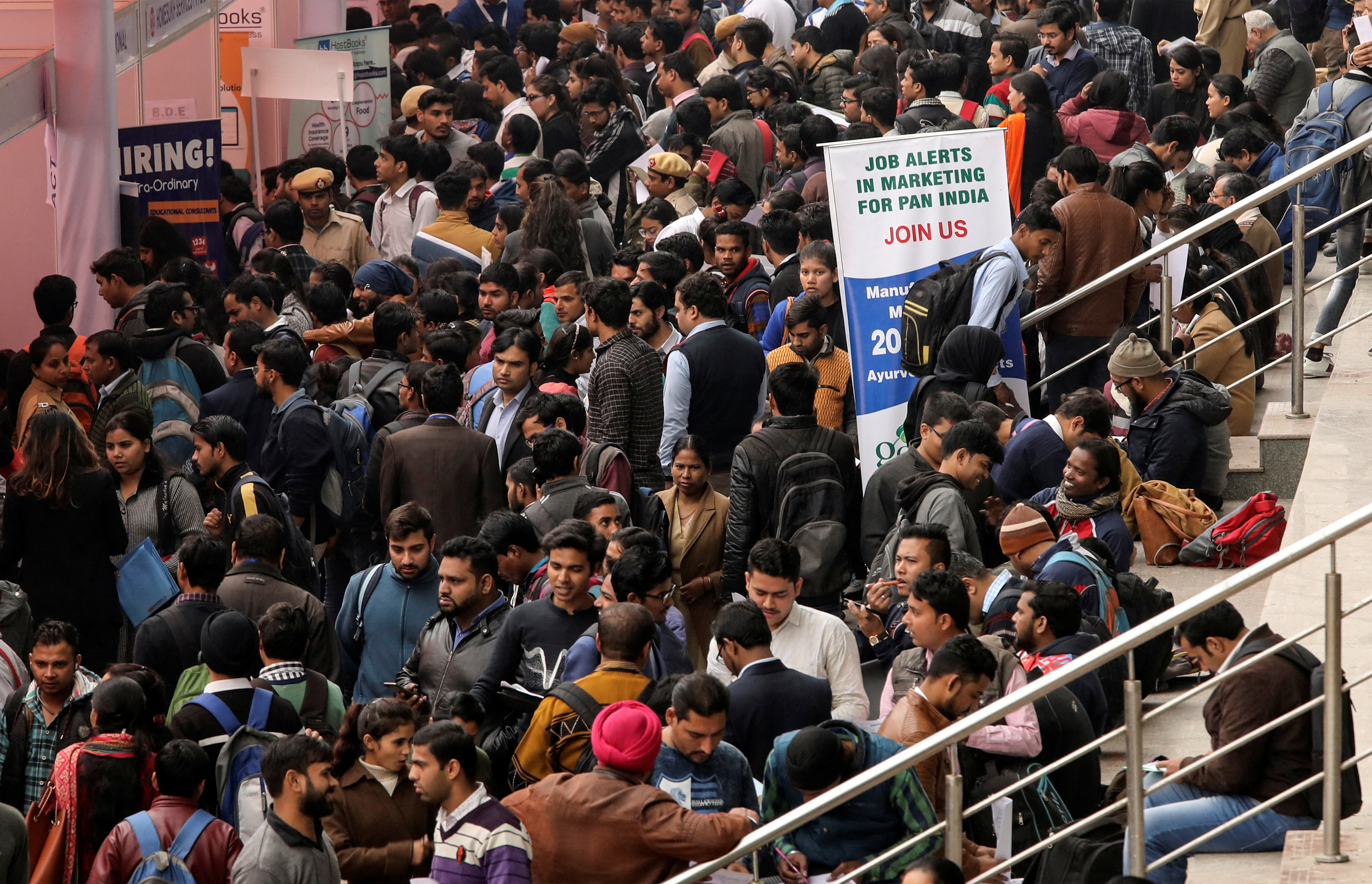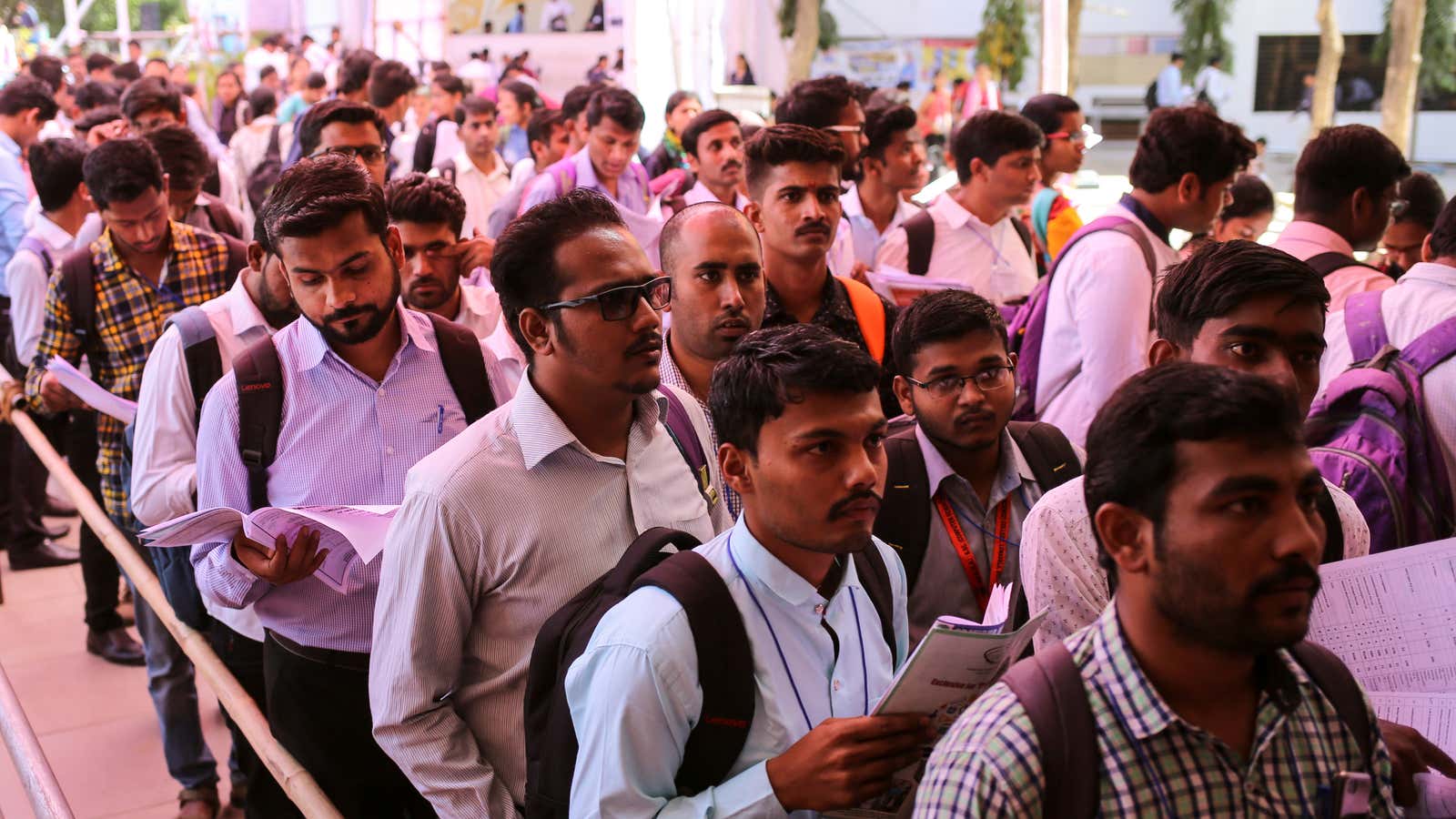Alarm Bells Ringing: India’s Unemployment Rate Hits Highest in Over Two Years

Alarm Bells Ringing: India’s Unemployment Rate Hits Highest in Over Two Years
India’s unemployment rate rose to 10.05% in October 2023, the highest in over two years. This is a cause for deep concern, as it comes at a time when the Indian economy is facing a number of challenges, including high inflation, rising interest rates, and the global economic slowdown.
What is Causing the Rise in Unemployment?
There are a number of factors contributing to the rise in unemployment in India. One key factor is the slowdown in economic growth. The Indian economy grew at just 4.1% in the first quarter of 2023, down from 6.3% in the previous quarter. This slowdown is due to a number of factors, including high inflation, rising interest rates, and the global economic slowdown.
Another key factor contributing to the rise in unemployment is the impact of the COVID-19 pandemic. The pandemic caused millions of people to lose their jobs, and many businesses were forced to close down. Even as the economy has reopened, many people have been unable to find new jobs.
The war in Ukraine is also having a negative impact on the Indian economy, particularly on sectors such as exports and tourism. This has led to further job losses in these sectors.

What are the Consequences of Rising Unemployment?
Rising unemployment can have a number of negative consequences for the economy and for society as a whole.
Economic Consequences:
Reduced incomes and spending: When people lose their jobs, they have less money to spend, which can hurt businesses and lead to slower economic growth.
Increased poverty and inequality: Those who lose their jobs may find it difficult to find new ones, and may be forced to rely on government assistance or private charity. This can widen the gap between the rich and the poor.
Social unrest: When people are unable to find jobs and support their families, they may become frustrated and angry. This can lead to protests and violence.
Social Consequences:
Increased crime and social problems: When people are unemployed and struggling to make ends meet, they may be more likely to commit crimes or engage in other risky behaviors.
Family breakdown and social isolation: When people are unemployed, they may feel ashamed and embarrassed. This can lead to problems in their personal relationships and make it difficult for them to connect with others.
Decline in mental health: Unemployment can be a stressful and demoralizing experience. This can lead to anxiety, depression, and other mental health problems.

What Can Be Done to Address the Unemployment Problem?
There are a number of things that can be done to address the problem of rising unemployment in India.
Government Measures:
Invest in job creation: The government can invest in infrastructure projects, manufacturing, and other sectors that create jobs.
Provide training and skills development programs: The government can provide training and skills development programs to help people develop the skills they need to get jobs in the formal sector.
Promote entrepreneurship: The government can promote entrepreneurship by providing loans and other support to startups.
Private Sector Measures:
Create more jobs: Businesses can create more jobs by expanding their operations and hiring new employees.
Invest in research and development: Businesses can invest in research and development to develop new products and services, which can lead to job creation.
Individual Measures:
Upskill and reskill yourself: Make sure that your skills are up-to-date and relevant to the job market.
Network with people in your field: This can help you to learn about job opportunities and get your foot in the door.
Use job portals to search for and apply for jobs: There are a number of websites and apps that can help you to find job openings.

Conclusion
The rising unemployment rate in India is a serious problem that needs to be addressed urgently. The government, the private sector, and individuals all have a role to play in creating more jobs and helping people develop the skills they need to get those jobs. If the unemployment problem is not addressed, it could have serious economic and social consequences for India.
Additional Recommendations
In addition to the measures mentioned above, there are a few other things that could be done to address the unemployment problem in India.
Reform the labor market: India’s labor market is rigid and inflexible, which makes it difficult for businesses to hire and fire workers. The government could reform the labor market to make it more flexible and business-friendly.
Improve the quality of education: India’s education system is lagging behind many other countries. The government could invest in improving the quality of education by providing better teacher training, investing in infrastructure, and making education more accessible to all.
Promote digital literacy: Digital literacy is essential for success in the 21st century job market. The government could promote digital literacy by providing free or low-cost internet access and computer training programs.
Support women’s entrepreneurship: Women are underrepresented in the Indian workforce. The government could support women’s entrepreneurship by providing loans and other support to women-owned businesses.
Reduce the informal sector: The informal sector is a major source of employment in India, but it is also characterized by low wages and poor working conditions. The government could reduce the size of the informal sector by creating more jobs in the formal sector and by regulating the informal sector more effectively.
Addressing the problem of rising unemployment in India is a complex challenge, but it is one that must be addressed if India wants to achieve its economic and social goals. The government, the private sector, and individuals all have a role to play in creating a more prosperous and equitable India.
Here are some specific examples of how the above recommendations could be implemented:
Reform the labor market: The government could pass legislation that makes it easier for businesses to hire and fire workers. This would allow businesses to be more flexible in their hiring decisions and to respond more quickly to changes in the market.
Improve the quality of education: The government could invest in teacher training programs and provide better pay and benefits to teachers. The government could also invest in infrastructure, such as new schools and libraries. And the government could make education more accessible to all by providing free or low-cost tuition and by expanding access to early childhood education.
Promote digital literacy: The government could provide free or low-cost internet access in rural areas and urban slums. The government could also partner with businesses and non-profit organizations to provide computer training programs.
Support women’s entrepreneurship: The government could provide loans and other financial assistance to women-owned businesses. The government could also provide mentorship and networking opportunities for women entrepreneurs.
Reduce the informal sector: The government could provide tax breaks and other incentives to businesses that create jobs in the formal sector. The government could also regulate the informal sector more effectively to ensure that workers are paid fair wages and have access to basic benefits.
By implementing these recommendations, the government, the private sector, and individuals can work together to create a more prosperous and equitable India for all.




